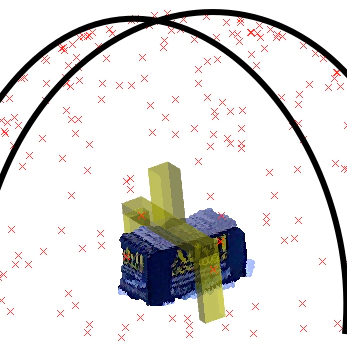
Abstract
In grasp detection, the robot estimates the position and orientation of potential grasp configurations directly from sensor data. This paper explores the relationship between viewpoint and grasp detection performance. Specifically, we consider the scenario where the approximate position and orientation of a desired grasp is known in advance and we want to select a viewpoint that will enable a grasp detection algorithm to localize it more precisely and with higher confidence. Our main findings are that the right viewpoint can dramatically increase the number of detected grasps and the classification accuracy of the top-n detections. We use this insight to create a viewpoint selection algorithm and compare it against a random viewpoint selection strategy and a strategy that views the desired grasp head-on. We find that the head-on strategy and our proposed viewpoint selection strategy can improve grasp success rates on a real robot by 8% and 4%, respectively. Moreover, we find that the combination of the two methods can improve grasp success rates by as much as 12%.